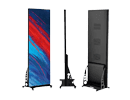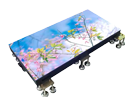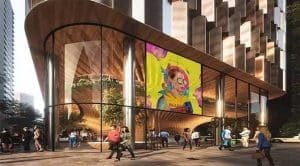Ensuring Low Failure Rate for Outdoor LED Display Screens
Choose High-Quality LED Display Screens
Selecting high-quality LED display screens is crucial for reducing failure rates. Opt for screens from reputable manufacturers with a track record of quality and reliability. Conduct thorough research and compare different brands to secure the most dependable option for your needs.
Factors to Consider When Choosing LED Display Screens:
- Brand Reputation: Choose brands that are well-regarded in the industry.
- Product Reviews and Testimonials: Look for feedback from other users.
- Warranty and After-Sales Service: Ensure the manufacturer provides comprehensive support.
Consider Environmental Factors
Outdoor LED display screens must withstand various environmental challenges. Ensure the screens you select are designed to endure harsh conditions.
Key Environmental Considerations:
- IP65 or Higher Rating: For waterproof and dustproof protection.
- Anti-Reflective Coatings: To minimize sunlight glare and improve visibility.
Proper Installation of LED Display Screens
Correct installation is vital for the longevity of LED display screens. Follow the manufacturer’s guidelines and hire professional installers.
Installation Best Practices:
- Secure and Stable Mounting: Ensure the screens are firmly attached.
- Proper Wiring and Connections: Prevent loose connections that can lead to issues.
- Adequate Support Structures: Use sturdy frames and supports.
Regular Maintenance for LED Display Screens
Establish a maintenance schedule to keep your LED display screens in top condition.
Maintenance Tasks:
- Regular Cleaning: Remove dust and dirt to maintain clarity.
- Checking and Tightening Connections: Ensure all connections are secure.
- Inspecting for Damage or Wear: Look for signs of wear and tear.
- Prompt Replacement of Faulty Components: Replace any damaged parts immediately.
Ensure Adequate Ventilation and Cooling
LED display screens generate heat, which can lead to failure if not managed properly.
Cooling Solutions:
- Proper Ventilation in the Display Housing: Allow for good airflow.
- Use of Fans, Heat Sinks, or Air Conditioning Systems: Manage heat effectively.
- Avoiding Direct Sunlight and Poor Airflow Areas: Place screens in shaded areas whenever possible.
Power Surge Protection for LED Displays
Protect your LED display screens from power surges or fluctuations with surge protectors or voltage stabilizers.
Power Protection Measures:
- Use of Surge Protectors: Shield screens from sudden power spikes.
- Voltage Stabilizers: Maintain a steady power supply.
- Regular Monitoring of Power Supply: Keep an eye on electrical conditions.
Use Protective Enclosures for High-Risk Areas
In areas prone to vandalism or harsh conditions, use protective enclosures to safeguard your screens.
Protective Enclosure Benefits:
- Enhanced Security: Deter potential vandals.
- Dust and Moisture Protection: Keep out contaminants.
- Resistance to Physical Damage: Protect against accidental impacts.
Monitor and Address Issues Promptly
Regularly check the performance of your LED display screens and address any issues quickly.
Monitoring and Troubleshooting:
- Dead Pixels and Color Inconsistencies: Check for pixel failures and color irregularities.
- Flickering or Abnormal Behavior: Identify any unusual activity.
- Timely Repairs and Replacements: Fix problems before they escalate.
Warranty and After-Sales Support
Choose LED display screens with a comprehensive warranty and reliable after-sales support.
Warranty and Support Considerations:
- Length of Warranty Period: Ensure adequate coverage duration.
- Coverage of Warranty Terms: Understand what is included in the warranty.
- Availability of Technical Support: Have access to ongoing assistance.
Conclusion
By adhering to these guidelines, you can significantly lower the failure rate of outdoor LED display screens and ensure their long-term performance and reliability. Selecting high-quality screens, considering environmental factors, ensuring proper installation, maintaining the screens regularly, managing heat and power issues, protecting the screens from damage, and leveraging warranty and support services will all contribute to the longevity and effectiveness of your outdoor LED displays.














